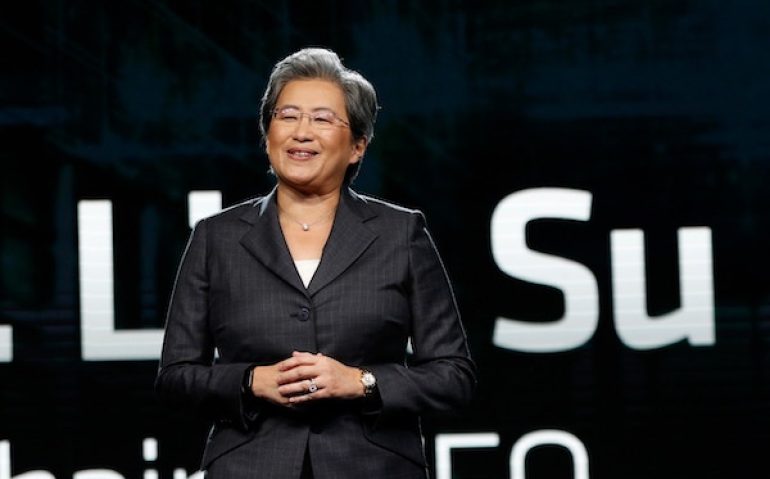In the ever-evolving landscape of artificial intelligence (AI) and advanced technology, the rivalry between Advanced Micro Devices Inc (AMD) and Nvidia Corp has garnered significant attention. With AMD recently unveiling details about their upcoming AI chip, which aims to challenge Nvidia’s dominance in the market, industry experts and enthusiasts are eagerly awaiting more information. In this article, we delve into AMD’s ambitious plans and the potential impact it could have on the AI industry.
AMD AI Chip: A Game-Changer in the Making
AMD, headquartered in Santa Clara, California, has revealed that their forthcoming AI chip will feature a substantial 192 gigabytes of memory. This impressive memory capacity holds the potential to help tech companies address the escalating costs associated with delivering services comparable to ChatGPT, an advanced language model. In an interview with Reuters, AMD’s Chief Executive, Dr. Lisa Su, emphasized the advantages of increased memory, stating, “The more memory that you have, the larger the set of models. We’ve seen in customer workloads that it runs much faster. We really do think it’s differentiating.”
The specific release timeline indicates a gradual availability of the chip starting in the third quarter, with mass production commencing in the fourth quarter. However, what remains unknown, much to the curiosity of Wall Street, is the identity of the potential buyers interested in AMD’s AI chip. AMD refrained from disclosing any information regarding major customers during their presentation. Additionally, details about pricing and how the chip will bolster sales were noticeably absent.
The Visionary Leader: Dr. Lisa Su
To understand the driving force behind AMD’s success, it is crucial to recognize the contributions of Dr. Lisa T. Su, the Chair and Chief Executive Officer of the company. Dr. Su has played a pivotal role in transforming AMD into a high-performance and adaptive computing leader, positioning it as one of the fastest-growing semiconductor companies worldwide. Before assuming the roles of chair and CEO, she served as the Chief Operating Officer, where she successfully integrated AMD’s various business units and spearheaded the alignment of product strategy and execution.
Dr. Su’s journey with AMD began in January 2012 when she joined as the Senior Vice President and General Manager for global business units. In this role, she exhibited remarkable leadership, overseeing the end-to-end business execution of AMD’s products and solutions. Her strategic vision and executional prowess have been instrumental in driving AMD’s growth and solidifying its position in the highly competitive AI and advanced tech market.
Meta’s Adoption of AMD: Beyond AI
Apart from making inroads into the AI market, AMD has also made significant strides in other domains. For instance, the company has started shipping high volumes of a general-purpose central processor chip named “Bergamo” to prominent entities like Meta Platforms. Alexis Black Bjorlin, responsible for computing infrastructure at Meta, confirmed their adoption of the Bergamo chip. It is worth noting that the Bergamo chip caters to a different segment of AMD’s data center business, primarily targeting cloud computing providers and other large-scale chip buyers.
While AMD’s collaboration with Meta in deploying Bergamo showcases their expanding reach, the focus of the article remains on their AI chip challenge to Nvidia. The competition between AMD and Nvidia has extended beyond hardware capabilities, with both companies investing in software tools specifically designed for AI researchers. Nvidia’s decade-long experience in providing software solutions to the AI community has solidified its market leadership. Nonetheless,
AMD is determined to bridge this gap by enhancing its Rocm software, a robust alternative to Nvidia’s Cuda software platform.
During the recent presentation, Soumith Chintala, Meta’s Vice President involved in open-source AI software development, expressed his close collaboration with AMD. Together, they aim to facilitate a seamless transition for AI developers from the dominant vendor to alternative offerings, including AMD’s products. Chintala emphasized the ease of integration, stating, “You don’t actually have to do that much work – or almost no work in a lot of cases – to go from one platform to the other.” While this collaboration highlights AMD’s commitment to providing user-friendly solutions, industry analysts remain skeptical about the broader market traction, particularly among less sophisticated buyers.
AMD’s Competitors: Navigating a Competitive Landscape
AMD’s impressive performance has catapulted it into the ranks of the top ten semiconductor companies globally. In comparison to other fabless chip firms that solely focus on chip design, AMD has established a formidable position in the industry. Intel, AMD’s primary competitor in the computer processor market, also develops x86 processors, creating a dynamic rivalry between the two giants. Moreover, AMD faces competition from other tech firms, including Nvidia, who develop alternative processor chips based on Arm architecture.
The competition further extends into the discrete and integrated graphics markets, where Intel and Nvidia pose significant challenges to AMD. Nvidia, in addition to being a formidable competitor in graphics, has maintained its edge in AI through a combination of cutting-edge chips and software tools designed specifically for AI researchers. While AMD’s hardware performance may be comparable, some analysts express reservations about the competitiveness of their software solutions when pitted against Nvidia’s offerings. Anshel Sag, an analyst at Moor Insights & Strategy, explains, “People still aren’t convinced that AMD’s software solution is competitive with Nvidia’s, even if it is competitive on the hardware performance side.”
As AMD gears up to launch its AI chip, the industry eagerly awaits the outcome of this fierce battle between AMD and Nvidia. With AMD’s emphasis on increased memory capacity and its commitment to providing viable software alternatives, the company is poised to challenge Nvidia’s market dominance. The visionary leadership of Dr. Lisa Su has been instrumental in AMD’s transformation, solidifying its position as a leading player in the AI and advanced tech sector. While the road ahead may present challenges, AMD’s relentless pursuit of innovation and superior performance may very well reshape the dynamics of the AI chip market.
Remember to visit Botcratic for the latest news and insights on AI, advanced technology, and the exciting developments within the industry.







